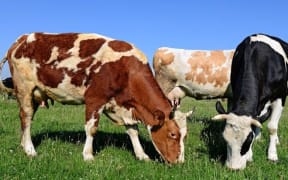A team of AgResearch scientists has identified five compounds that reduce methane emissions from livestock by up to 90 percent in initial short-term trials, providing a technology that could significantly reduce New Zealand's greenhouse gas emissions.
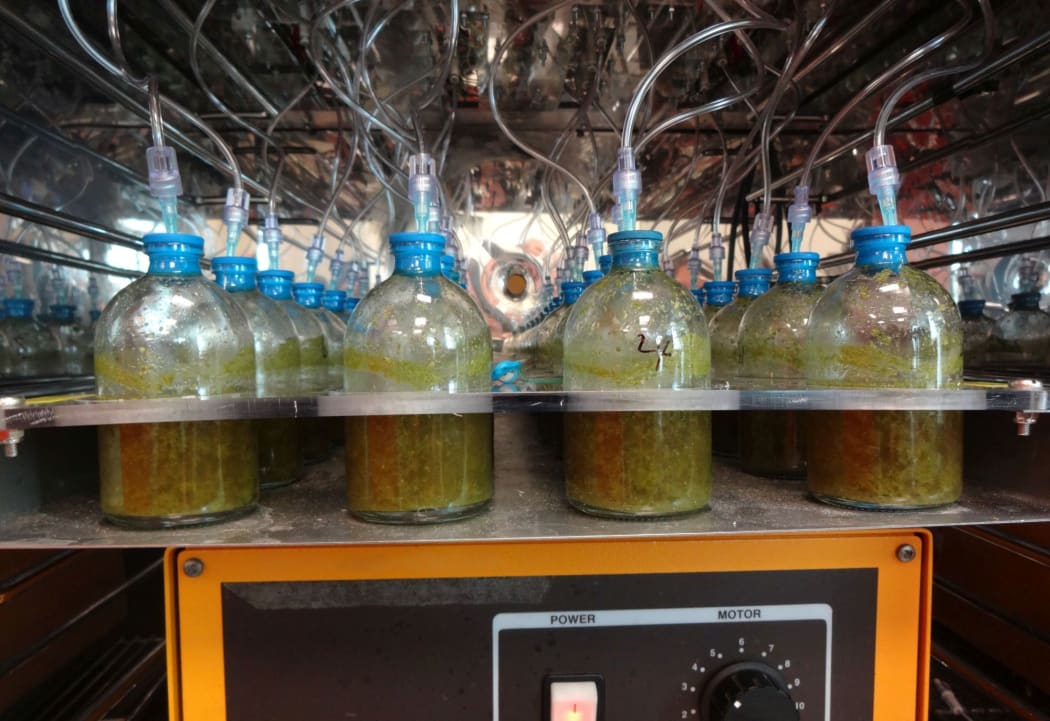
The compounds were first tested in laboratory experiments in rumen fluid. Photo: RNZ / Veronika Meduna
The announcement was made today at the Agricultural Greenhouse Gas Mitigation conference in Palmerston North.
Methane is a potent greenhouse gas and currently accounts for 44 percent of New Zealand's total emissions. Most of this methane comes from livestock.
AgResearch principal scientist Peter Janssen, who co-ordinates the methane research programme, said the findings were the culmination of five years work, during which the team screened more than 100,000 compounds through computer-based searches and in laboratory experiments.
The screening process identified five compounds that have now been tested successfully in sheep, showing a significant reduction in methane production over a two-day period.
"The programme has been looking for new types of inhibitors of methane production from the rumen. This can be regarded as a first step in the process towards developing something that can be used on the farm."
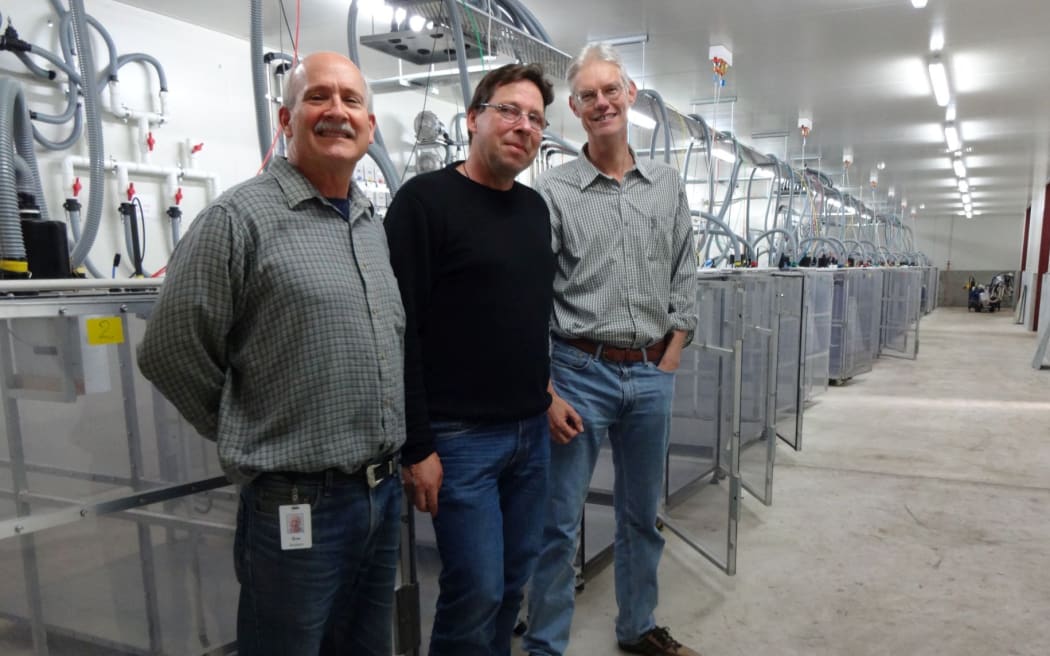
The team behind the discovery (from left) Ron Ronimus, Stefan Muetzel and Peter Janssen. Behind them is a row of respiration chambers they used to test methane-inhibiting compounds in sheep. Photo: RNZ / Veronika Meduna
The rumen is the first and largest part of the multi-chambered stomach of grass-eating ruminant animals, including sheep and cattle. It acts as a fermentation vat where microbes break down the cellulose in the plant material to make it digestible. One group of rumen microbes, the methanogens, takes up surplus hydrogen and produces methane.
New Zealand is unusual among developed countries in that almost half of the country's greenhouse gas emissions come from agriculture, mostly in the form of methane from belching livestock and nitrous oxide from fertilised soils.
In recognition of the fact that methane accounts for most of these agricultural emissions, the Government and pastoral industry formed a partnership to fund research to develop inhibitors that would specifically knock out methanogens but leave the rest of the rumen microbial community intact.
Peter Janssen said the effort was now paying off. "These initial steps are relatively short-term trials in sheep and they show that you get a reduction of methane between 30 to 90 per cent. It's a very exciting result but there's still a lot of checking to be done before you actually get something that a farmer can use safely."
Thousands of compounds screened
AgResearch scientist Ron Ronimus, who leads the methane inhibitor discovery project, said the team made use of genetic information that became available when the first complete genome of a methanogen was published in 2010.
Of the roughly 500 known genes, the team focused on finding compounds that would inhibit the function of those that are known to be involved in the production of methane.
Methanogens belong to a group of ancient microbes known as archaea, and that offered an advantage for the team.
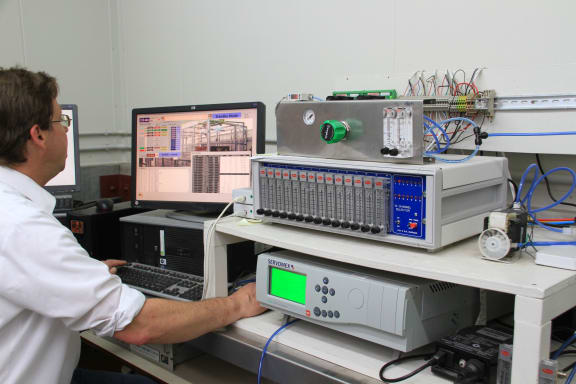
Stefan Muetzel is monitoring results coming in from the respiration chambers. Photo: AgResearch
"They are very different from other bacteria, protozoa and fungi that are also in the rumen, breaking down the fibre during the fermentation."
The team scaled up the discovery process by screening thousands of potential compounds in the laboratory and then testing the most promising inhibitors in sealed containers of real rumen fluid.
"It's a very thick funnel if you like, we're putting many compounds in at the top and getting very few out at the bottom," he said.
Each of the five compounds had to pass toxicity tests before they could be tested in sheep in respiration chambers that allow the science team to monitor changes in methane emissions precisely, as well as feed intake.
"The intention is to only hit the methanogens," said Peter Janssen. "The nice thing about the way the programme is structured is that the last major test before the compounds go into the animal is to test them in rumen contents that have been taken from an animal.
"If it has a general impact on other microbes in the system, then you see that the whole fermentation shuts down. If it's only affecting the methanogens then you see that the fermentation continues just like normal, and it's only the methane part that is affected. If it then passes subsequent toxicity testing then we know we can safely try it in an animal."
Ron Ronimus said the goals now were to test if the inhibition effect lasts long-term and whether it can be used to increase animal productivity.
"Methane that's been produced by rumen methanogens represents between 2 and up to 15 per cent of dietary energy loss for the animal. If some of that can be recaptured that would be great, because that would lead to increased productivity. It would be fantastic for farmers."
Apart from desired effects such as increased productivity, larger-scale trials would also be necessary to rule out any negative effects such as residues in meat or milk. The team's goal is to have a farm-scale product available or at least close to commercialisation within five years.
"We think we can do this," said Peter Janssen. "The fact that the programme, which really only started about five years ago, this inhibitor discovery … has come up with pretty much the first five that were tested in animals look pretty good. I think there is a very good chance of coming up with something that will be useful."
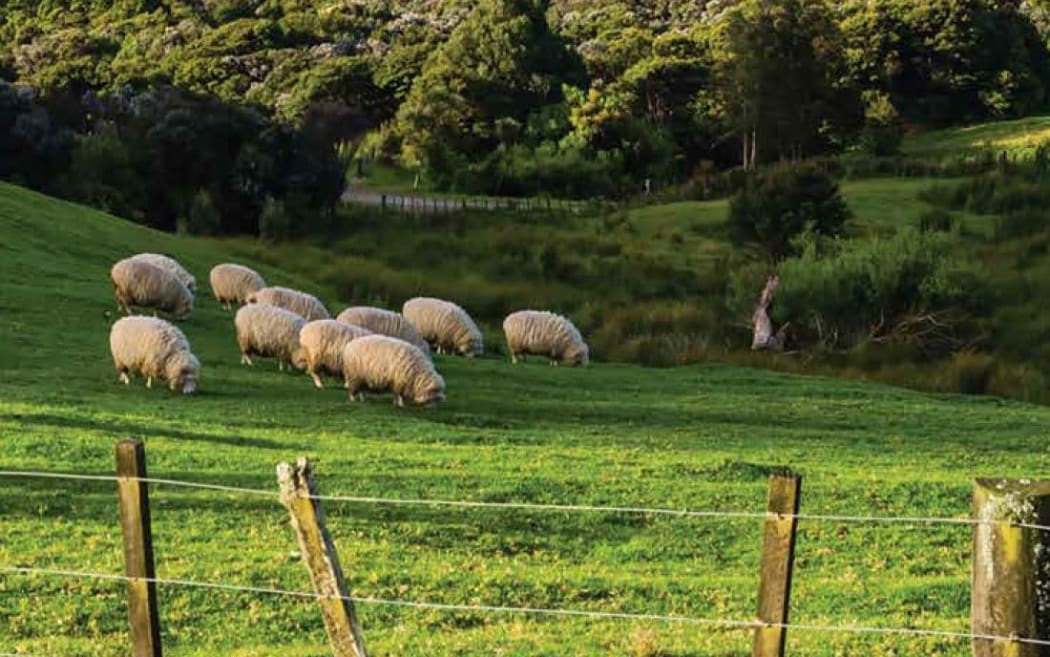
Sheep and cattle are ruminants, and the methanogen microbes in their rumen produce methane as part of the feed fermentation process. Photo: Supplied
